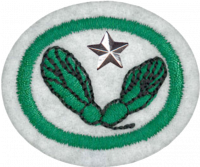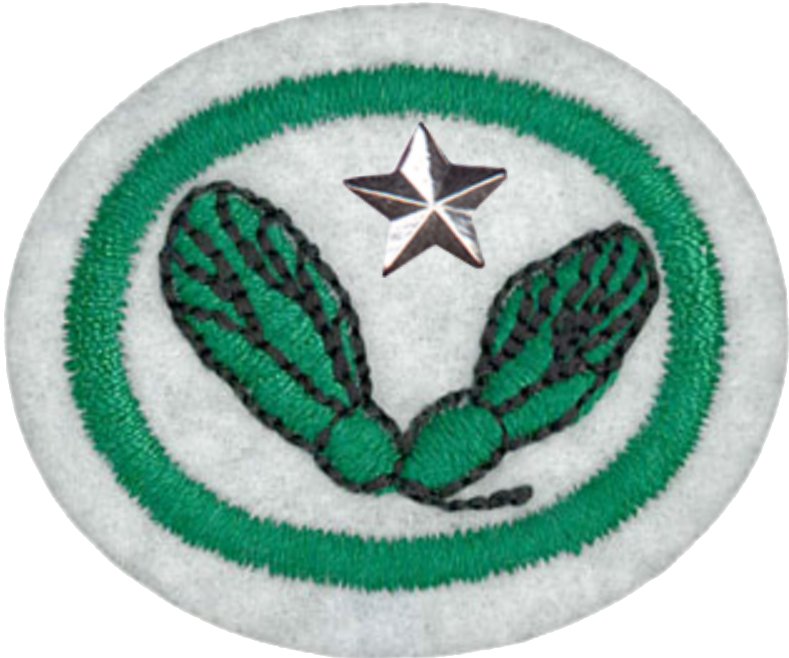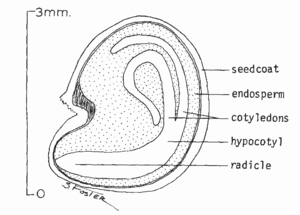Difference between revisions of "AY Honors/Seeds - Advanced/Answer Key/es"
(Created page with "<noinclude>") |
(Created page with "</noinclude> <!-- 2. Identificar a partir de dibujos y conocer la finalidad de cada una de las siguientes partes de una semilla: --> Image:Lycium barbarum seed.png|thumb|30...") |
||
| Line 9: | Line 9: | ||
{{CloseReq}} <!-- 1 --> | {{CloseReq}} <!-- 1 --> | ||
{{ansreq|page={{#titleparts:{{PAGENAME}}|2|1}}|num=2}} | {{ansreq|page={{#titleparts:{{PAGENAME}}|2|1}}|num=2}} | ||
| − | <noinclude> | + | <noinclude></noinclude> |
| − | </noinclude> | + | <!-- 2. Identificar a partir de dibujos y conocer la finalidad de cada una de las siguientes partes de una semilla: --> |
| − | <!-- 2. | + | [[Image:Lycium barbarum seed.png|thumb|300px|Diagrama que muestra el endospermo y la radícula.]] |
| − | [[Image:Lycium barbarum seed.png|thumb|300px| | + | [[Image:Ovule.png|thumb|300px|Óvulos de la planta: óvulo de gimnosperma a la izquierda, óvulo de angiosperma (dentro del ovario) a la derecha]] |
| − | [[Image:Ovule.png|thumb|300px| | + | ;Endospermo: El endospermo es el tejido producido en las semillas de la mayoría de las plantas con flores en el momento de la fertilización. Rodea al embrión y proporciona nutrición en forma de almidón, aunque también puede contener aceites y proteínas. |
| − | ; | + | ;Radículo: La radícula es la primera parte de una plántula (un embrión de una planta en crecimiento) que emerge de la semilla durante el proceso de germinación. La radícula es la raíz embrionaria de la planta y crece hacia abajo en el suelo. |
| − | ; | + | ;Plúmula: La plúmula es el brote embrionario. Es el precursor del tallo y las hojas de la planta. |
| − | ; | ||
| − | |||
<div lang="en" dir="ltr" class="mw-content-ltr"> | <div lang="en" dir="ltr" class="mw-content-ltr"> | ||
Revision as of 17:08, 22 April 2021
Nivel de destreza
2
Año
1961
Version
05.11.2024
Autoridad de aprobación
Asociación General
1
Para consejos e instrucciones, véase Semillas.
2
- a. Endospermo
- b. Radículo
- c. Plúmula
- d. Micrópilo
- Endospermo
- El endospermo es el tejido producido en las semillas de la mayoría de las plantas con flores en el momento de la fertilización. Rodea al embrión y proporciona nutrición en forma de almidón, aunque también puede contener aceites y proteínas.
- Radículo
- La radícula es la primera parte de una plántula (un embrión de una planta en crecimiento) que emerge de la semilla durante el proceso de germinación. La radícula es la raíz embrionaria de la planta y crece hacia abajo en el suelo.
- Plúmula
- La plúmula es el brote embrionario. Es el precursor del tallo y las hojas de la planta.
- Micropyle
- The micropyle is an opening in a plant's ovule (the structure that gives rise to and contains the female reproductive cells). The micropyle opening allows the pollen tube to enter the ovule for fertilization. In gymnosperms (e.g. conifers), the pollen itself is drawn into the ovule and the micropyle opening closes after pollination. During germination, the seedling's radicle emerges through the micropyle.
3
In monocotyledons (or simply monocots), the seed embryo has one cotyledon while the embryo of the dicotyledon (or dicot) has two. The major leaf veins in a monoct are parallel, but they are branched in a dicot. The flower parts (petals, sepals, etc.) in monocots are multiples of three while in dicots are multiples of four or five.
Monocots
- Corn
- Grasses (such as wheat, rye, barley, etc.)
- Lilies
- Onions, garlic
Dicots
- Roses
- Asters
- Nightshades (tomatoes, potatoes, etc.)
- Squash, pumpkin
- Beans
4
5
A chief difference between spores and seeds as dispersal units is that spores have very little stored food resources compared with seeds, and thus require more favorable conditions in order to successfully germinate. Seeds, therefore, are more resistant to harsh conditions and require less energy to start cell division. Spores are usually produced in large numbers to increase the chance of a spore surviving.
6
You can read this text online or you can get a copy of the book at The Adventist Book Center.
This text is a discourse on the parable of the sower as found in Matthew 13. Ellen White illustrates several spiritual lessons based on this parable.
7
8
The two families of plants are the moncots and the dicots. To see the difference, cut a corn kernel and a bean in half. The corn seed will be difficult to divide, but the bean will almost divide itself in half at the boundary between the two cotyledons.





